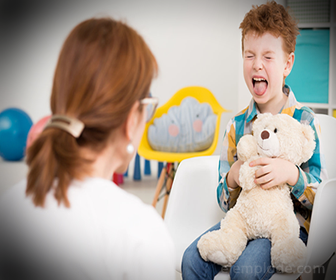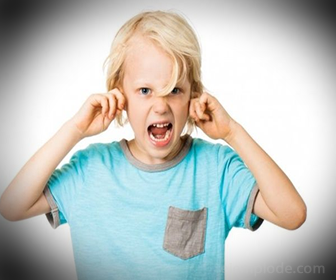Mental Disorders in Children
Psychology / / July 04, 2021
The Mental disorders during childhood are situations of dysfunction in psychic processes that can be caused by events of tension or stress, whether real or imagined, in those early years of life.
They are classified based on the mental aspect in which their manifestations are focused.
Types of Childhood Mental Disorders
Hyperkinetic Disorders
They are a family of disorders whose main characteristics are:
- Onset during the first five years of life
- Little constancy in activities where the use of intellectual functions is required
- Disorganized, excessive, poorly regulated activity.
- Hyperkinetic children are often impulsive and reckless
- Propensity to accidents and to be in discipline difficulties.
- Defiant attitude fueled by a foray into rule violation
- Isolation among those his age, although his relationships with adults are uninhibited
- Asocial behavior and low self-esteem.
- Delayed motor and language development are very common
Disorders such as:
Attention Deficit Hyperactivity Disorder
Hyperkinetic Conduct Disorder

Behavior Disorders
They are a group of Disorders that are defined by a repetitive and persistent pattern of asocial, aggressive or defiant behavior. For an accurate diagnosis of this type of Disorder, it is essential that such behavior reaches higher levels of violation of socially expected behavior for the age of the patient. It must be even more serious than an ordinary childhood mischief or adolescent rebellion, and assume a pattern lasting six months or more.
The Diagnosis is based on excessive levels of fighting and bragging, cruelty towards other people and towards animals, destruction of other people's property, theft, lying, running away from home and school, disobedience excessive.
Disorders such as:
Conduct disorder limited to the family context
Unsociable conduct disorder
Sociable conduct disorder
Oppositional defiant disorder

Mixed Disorders of Conduct and Emotions
They are a family of Disorders that are defined by the combination of obvious and marked symptoms of depression, anxiety and other emotional disorders with aggressive, asocial or challenging.
Disorders such as:
Depressive conduct disorder
Other mixed disorders of behavior and emotions, associated with neurosis.
Emotional Disorders of Specific Onset in Childhood
These types of disorders are exaggerations of normal developmental trends.
Disorders such as:
Separation Anxiety Disorder
Phobic Anxiety Disorder
Social Anxiety Disorder
Sibling Rivalry Disorder
Childhood-Onset Social Behavior Disorders
Family of Disorders that have as a common feature the presence of abnormalities of social behavior during the developmental stage, but that, unlike the disorders pervasive developmental disorders, are not characterized primarily by apparently constitutional social disability or by deficiencies that affect all areas of the behaviour.
Disorders such as:
Elective mutism
Reactive attachment disorder
Uninhibited attachment disorder
Tic Disorders
They are a group of disorders in which the frequent manifestation is some form of tic. A tic is an involuntary, rapid, recurrent and non-rhythmic motor act that involves circumscribed muscle groups, or a sudden onset vocal emission, without apparent purpose.
Tics are often experienced as irresistible, but they can be suppressed for variable periods, exacerbated by stress, and disappear during sleep. Simple motor tics are blinking, shrugging, facial grimacing, neck shaking. And vocal tics include clearing, coughing, huffing, and hissing.
Disorders such as:
Transient tic disorder
Chronic motor or vocal tic disorder
Combined Multiple Vocal and Motor Tic Disorder (Tourette Syndrome)

Other Emotional and Behavioral Disorders
It is a group of disorders that share the trait of starting in childhood, but are also different from each other. Some are more complex than others for the reason that they are associated with psychosocial problems.
Disorders such as:
Non-organic enuresis: Urinating at night
Non-organic encopresis: defecate in places not suitable for these purposes
Eating Disorder in Childhood: Refusal of Food and Abnormal Pickiness
Pica in childhood: ingestion of non-nutritive substances
Stuttering: hesitant speech with repetition or prolongation of sounds, syllables or words
I sputter: Speak very fast, high speed of speech
Examples of Mental Disorders in Children:
Attention Deficit Hyperactivity Disorder
Hyperkinetic Conduct Disorder
Conduct disorder limited to the family context
Unsociable conduct disorder
Sociable conduct disorder
Oppositional defiant disorder
Separation Anxiety Disorder
Phobic Anxiety Disorder
Social Anxiety Disorder
Sibling Rivalry Disorder
Elective mutism
Reactive attachment disorder
Uninhibited attachment disorder
Transient tic disorder
Chronic motor or vocal tic disorder
Combined Multiple Vocal and Motor Tic Disorder (Tourette Syndrome)
Non-organic enuresis
Non-organic encopresis
Eating Disorder in Childhood
Pica in childhood
Stammering
I sputter



